-
Posts
56 -
Joined
-
Last visited
Content Type
Profiles
Forums
Blogs
Gallery
Events
Store
Posts posted by Poison Dwarf
-
-
Thanks, Dave. That's much appreciated.
My guy is definitely C. Roeβler, so perhaps Bernhard was his father. Perhaps I'll be able to determine his first name by working down a generation.
Did the authorities publish rank lists during all the war years?
0 -
I'm not sure I'm in the right place, but I'll pose the question anyhow:
I've been researching an Imperial German cavalry officer by the name of C. Röβler (spelled Roeβler in the ranglisten). I believe he attended the Kreigsschule in Metz in 1899 and then joined the reserve officers of the No. 13 Dragoner in 1902. He was awarded the Landwehr Dienstauszeichnung (LD2) in 1910 and promoted to Oberstleutnant in 1911. He was still on the reserve officer list in the 1913 rangliste. I suspect he was mobilized in 1914 and continued to serve in the 13th, but don't know where to look to confirm that and continue the research.
Any suggestions or guidance would be very welcome and deeply appreciated. Thanks in advance.
0 -
-
Interesting thread. Here is a summaries of the careers of English/Irish officers I encountered while researching the original owner of a Austrian heavy cavalry sword that I have in my collection. As it turns out, the sword was the property of Bedingfeld. Ferrall and Jerningham were instrumental in obtaining his commission in the Austrian forces.
Charles Richard Bedingfeld was the second son of the 5th Baronet Bedingfeld of Oxburgh Hall, County Norfolk. Born in 1803, and second-in-line to inherit his father’s estates, Charles was destined to be a soldier. At the age of 18, he was appointed a commission in an Austrian heavy cavalry unit: the 8th Böhmisches Kürassier-Regiment. He served for almost 10 years before returning to England where he served as a Captain in the 1st Regiment of Norfolk Militia. He was later promoted to Major in the regiment, and retired his commission in 1862.
James O’More Ferrall was born in Dublin on December 23, 1753. In 1773, at the age of 20, James journeyed to Vienna and enlisted in the army of the Archduchy of Austria, an integral part of the Holy Roman Empire. He served in the French Revolutionary Wars in Italy and Turkey.
In 1790, James was promoted to the rank of Major. Austrian army records indicate that his title in the Austrian forces was Jakob Ritter von O’Ferrall. By 1800, James had risen to become a Lieutenant Colonel. In August 1805, Napoleon launched the Ulm Campaign, a joint French-Bavarian manoeuvre aimed at outflanking the Austrians. Under the command of Lieutenant Marshall Karl Mack von Lieberich, James saw action at the Battle of Günzburg on October 9, where the Austrians were resoundingly beaten. Two days later he was wounded and captured by the French at Landsberg am Lech in Bavaria, following another defeat at Haslach-Jungingen. The war between France and Austria ended on October 20, and on
December 26 the two Emperors signed a peace treaty.The treaty guaranteed Ferrall’s release, but by now the 52-year-old James was elderly and still injured. In recognition of his service, he was made Chamberlain to Franz I and served the Emperor as the officer in charge of the household for the next four years. The fact that the role was given to James demonstrates the high regard in which the Irishman was held by the Emperor. During his time as Chamberlain, even though not on the battlefield, Ferrall would rise to the ranks of Colonel in 1807 [Charles at that time also became Colonel of the 8th Austrian Kurassier Regt., a post he held for two years] and Major General on the day of his retirement in 1809. For two years, he lived in Vienna on a state pension.
William Charles Jerningham (born 1772, died October 1820), entered the Austrian service at the age of 20 years. He served in Bender’s Regiment, also designated Infantry Regt. No. 41, and signalized himself by his distinguished bravery and conduct during the whole of the first French revolutionary war, having been present at the great battles fought in Germany and Flanders during the seven campaigns from 1790 to the peace of Campo Formio (signed October 18, 1797) when he quit the Imperial service and returned home. James may well have served in other Austrian units during his enlistment. The reference to Bender’s Regiment comes from the Battle of Jemappes (Nov. 6, 1792), in which the Regiment suffered especially heavy casualties, losing 14 officers and 400 men.
0 -
A very similar item was identified on a German sword forum as being from Baden c.1800. I'll PM you a link.
Oh, and I think the anchor-like motif is actually a flag and a fascine, as Rayjin suggested.
0 -
To get back to the second or third topic addressed in this thread: Balmorals, tams, etc. . . . here's a shot of some Cameronian squaddies (left and right) who appear to made friends with an Aussie (a presumption based on the headgear). No tartan behind the badges (from what I can see) and definitely no hackles. I recognize this is not what one would call a full-dress occasion.
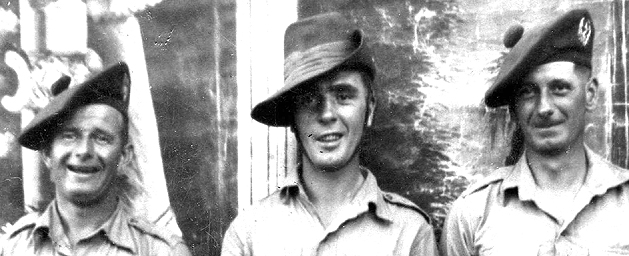 0
0 -
A quick internet search reveals that from 1921, both battalions wore the curved and blackened "Cameronians" shoulder title, so this could well be the 2nd Batt. in Palestine.
Your comment about old prejudices reminded me of this quip I saw printed in the 2002 Covenanter:
“From an old Seaforth Highlander explaining the difference between Cameronians and Cameron Highlanders:
‘The Cameronians were intelligent fighters. The Cameron Highlanders were neither.’ ”
All in fun, of course.
0 -
Here's a detail scan, but yes, it's very like the upper portion of the OR's shako brush, not a feather hackle at all.
Tough to say exactly where or when it was taken. The back reads "Post Card" in English, French, Italian, and Spanish, but is otherwise blank. The painted background has a Mediterranean feel to it, so I'd guess Malta.
He's wearing blackened "Cameronians" shoulder titles. Did the Cameronians v Scottish Rifles distinction extend to shoulder titles? As for the shirt, could be any dark color, but black or rifles green would certainly make sense. Interesting to see the collar tucked away. It must have been hot, wherever he was.
I'd bet he's not a day over 19 years.
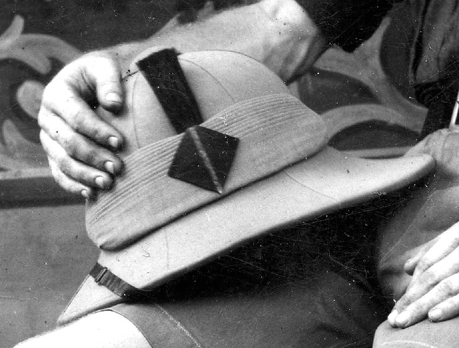 0
0 -
. . . to jf42's points . . .
The aforementioned black hackle in a Cameronians Wolesley and the OR and Officers' shakos with their respective plumes.
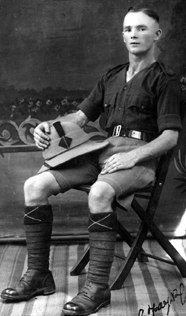
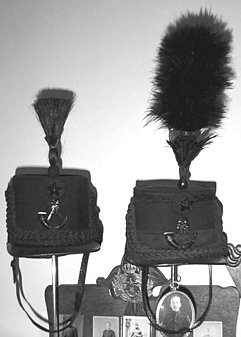 0
0 -
I am very skeptical about the match.... the only thing in common is the crow.
Best
Chris
Chris, you certainly know more about this are than I (because everyone knows more about this than I do), but in case it helps, have a look at the heraldry discussion here: http://www.heraldik-...p?p=53341#53341
Others think it could also be a younger brother or Lt. Col. Leopold Graf von Schlitz, per the Ehren-Rangliste 1914-1918, p. 716).
Either way, they all seem pretty confident that it's a von Schlitz.
I'm certainly open to other theories.
PD
PS: It's definitely not von Driesen.
0 -
Looks like the answer is:
"Im Jahre 1913 stand der - am 4. Aug. 1890 in Berlin geborene - Leutnant Eitel-Leopold Graf v. Schlitz genannt v. Görtz und v. Wrisberg bei dem in Berlin garnisonierten 3. Garde - Regiment zu Fuß. Er schied nach dem Ersten Weltkrieg als Hauptmann a.D. aus dem Regiment aus."
Many thanks to Jens and others for helping to discover the owner.
PD
0 -
-
Hi, here the (Driesen) coat of arms!
Best regards,

Jens
Thank you very much, Jens. I had a description of the arms, but this graphic really helps pull it all together. There are a few minor differences in the section above the crow (I'm obviously no heraldry expert), but I suspect those are minor variations that aren't too critical.
Many thanks again.
PD
0 -
I found an 1883 rangliste on Google books and started going through it, but quickly discovered that old German script doesn't compute in my old brain.
So, does anyone [who can read old German script] have a c1900 list that shows a Driessen (or Driesen) in a Guard infantry unit?
Many thanks in advance,
PD
0 -
I may be wrong, but I don't think they're available online. I bought the 1914 Rangliste from Paul Chepurko on a CD. I don't know if he's still selling them or not, but the contact info for him used to be RANGLISTEONCD@OPTONLINE.NET
I'll give it a shot. Thanks, Mike.
PD
0 -
The only Driessen in the 1914 Rangliste is a doctor. The only Driesen listed is a Leutnant d. Reserve in Infanterie-Regiment Vogel von Falkenstein (7. Westfälisches) Nr.56.
Thank you, Mike. Was the Rangelist an annual publication? Are they available on the 'net? I'm thinking I may have to move forward in time in the search for Driessen.
Much appreciated.
PD
0 -
I'm attempting to research a m1889 IOD bearing a Guard star (but find it challenging to say the least). The grip is of horn, and there is a crest on the pommel. There are no maker's stamps on the sword and "F. Damaschke" was the retailer from Berlin. The crest has been tentatively identified by a German heraldry enthusiast as being of the Driessen or Driesen family.
Searching this site (http://home.foni.net.../schlacht00.htm), which lists people of noble German families who served during World War 1, I found this entry "Driessen, Obltn.dR" on this page: http://home.foni.net.../schlacht04.htm.
Can anyone tell if this Lieutenant Driessen was in a Guard unit, and or are there any other members of the Driessen (or Driesen) family who served in Guard units?
Happy to answer any questions you may have, and many thanks in advance for any information or guidance.
PD
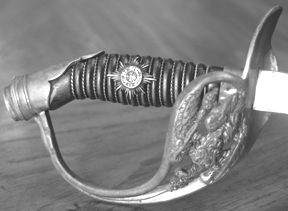
 0
0 -
Just one of innumerable "fashion statement" options, as far (not very
 ) as I know.
) as I know.Found the guy--
Militär Wochenblatt 11 September 1915, Column 3866--
Vizewachtmeister from Landwehrbezirk Soest, commissioned 2 September 1915 as Leutnant der Landwehr II. Aufgebot in Kraftfahr Bataillon (hence the Gardestern), serving in the Kraftwagen Park der 2. Armee.
Don't find him on any of the award rolls we've got. Probably son of the 1885 fellow-- it's a really unusual name for a German officer. Survived the war.

Thanks Rick and Bear for your efforts. Any indication in the source of what his first name was?
0 -
I don't know what you mean by a "M1913." The officers' sword in general use was the IOD89.
Please provide a scan showing what the entire hilt actually is.
I thought the folding guard made it a m1913, but I'm happy to be schooled.
Thanks for taking a look.
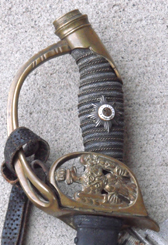 0
0 -
A friend has inquired about a p1913 Prussian Guards degen he owns, with the name of "W. Olmesdahl" unprofessionally engraved on the folding guard. Can anyone provide any guidance on Herr Olmesdahl's history?
The sword was retailed by Pack, Ohliger & Co., which I have as being in operation in Solingen between 1905-1925.
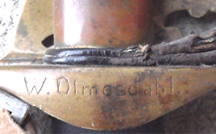 0
0 -
That's either a dog in the bottom left or a big dust bunny, not sure which. 90th Perthshire Light Infantry, 1878.
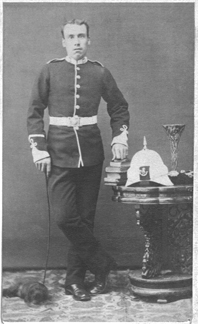 0
0 -
Thanks for posting your Vimy casualty medal. I imagine you already know that it's very easy to obtain his service file and circumstances of death should you wish to research the medal any further. The CEF attestation papers and unit war diaries are also free to use online.
I have 5 other groups i have to post yet but just havn't had time to do the write ups.
Cheers
Chris
Chris:
If you should ever come across a British War Medal and/or Victory Medal named to Gunner William J. Bryan. 87139. 20th Battery, Canadian Field Artillery, please give me a heads up. He was my grandfather and enlisted in Lethbridge in '14. He survived, and returned to Southern Alberta after de-mob, but the whereabouts of his medals is unknown. I do have what I think was a generic medal given to him for sports or proficiency of some kind. It's engraved on the back with his name and "Belgium 1915." Just a trinket really, but of them all he probably liked it best.
Thanks,
Mark
0 -
Sewn across the chest of a sleeveless sports t-shirt. Oddly enough, I don't think I've ever seen one of those with the insignia attached... JUST the loose insignia like this that were never sewn on, and photos of the "track suits" being worn.
They also sewed cloth versions of the sports badges on the left thigh-- don't know why-- of their gym shorts.
Boy, Rick, you get around. What don't you know about things German and military in nature?
0 -
It's an Army sport shirt eagle - for the exercise kit. Quite common; 'collector value' perhaps US$20?
Thanks, Scott. How would it have been used?
0



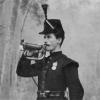
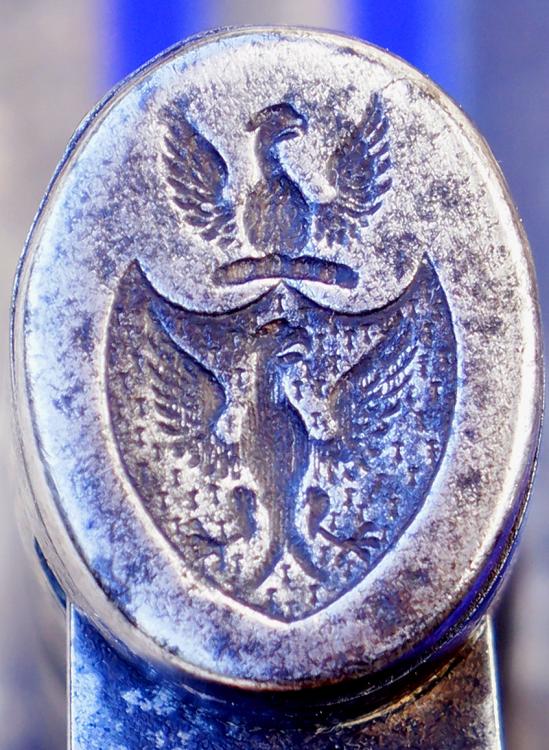
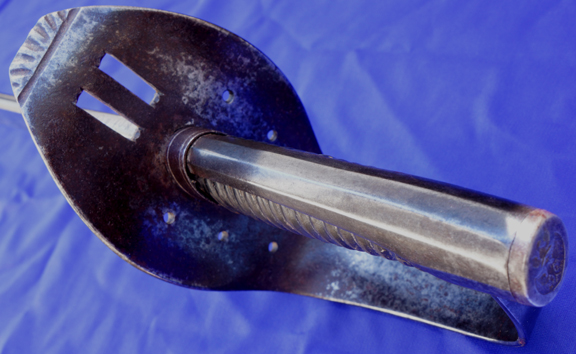
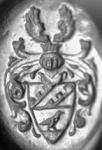
Need help in tracing officer of 13 Dragoner 1902-1913
in Germany: Imperial: Rick (Research) Lundstrom Forum for Documentation and Photographs
Posted
Very helpful. Thanks, Dave.